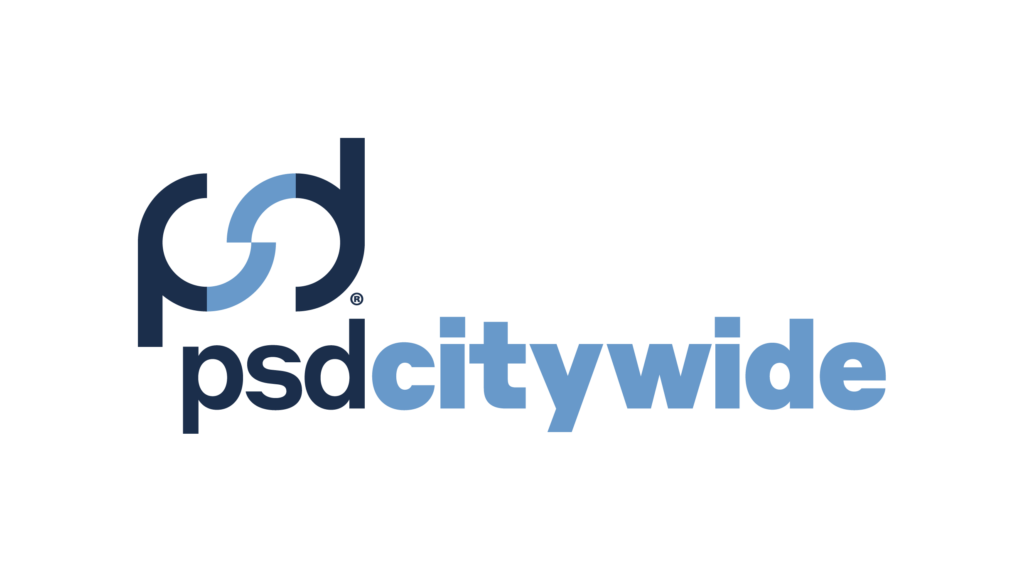Small towns are close-knit communities that frequently rely on manual processes to oversee service requests, asset conditions, and asset risk analysis. Often, individuals responsible for the administration of small communities assume that enterprise-level systems are overkill. This assumption is wrong – enterprise asset management and ePermitting systems are useful, effective tools for all municipalities, regardless of size.
Many smaller communities across North America are experiencing unprecedented growth as people migrate from city centers to neighbouring counties and towns. High growth requires scalable, integrated tools that can collect and manage a variety of data and effectively schedule preventative maintenance and inspections. Small towns that leverage big systems are prepared and resilient in the face of growth, making their communities more adaptable and welcoming.
EAM (Enterprise Asset Management) is a system that helps organizations manage, track, and optimize the lifecycle of physical assets, ensuring efficient operations and informed decision-making, while ePermitting is a digital platform that streamlines the permitting process by automating applications, approvals, and inspections for various projects and activities. This article will explore how these tools can support long-term sustainability, efficiency, and growth management for smaller communities.
The Hidden Cost of “Small” Tools
Small tools may work in the short-term, but over time, the risks that come with using disconnected, manual systems outweigh the benefits. Relying on tools like paper records, Excel spreadsheets, web forms for permit collection, disconnected databases, and other manual processes create risks for small towns, where losses can have a big impact. Although these processes may work now, they do not scale well in the long-term.
Relying on manual processes puts towns at risk of concerns such as data loss, reliance on too few people, lack of transparency, and difficulty transmitting information between departments and stakeholders. It is easy for data to be lost due to simple human error or delays, which could create problems down the road. For example, if municipal data is incomplete or inaccurate, it could lead to misleading or incorrect budgets based on poor data.
Furthermore, when many siloed systems are in use, it becomes difficult for town staff to effectively and consistently communicate with community members regarding their investment and maintenance priorities and practices. If service requests get lost in excessive emails or work orders are accidentally deleted, the community level of service will decline.
When it comes to permitting, manual processes can lead to unnecessary delays. Paper-based workflows are not scalable, and as time goes on, it is difficult to effectively organize using outdated filing systems. Community members need to count on reliable permitting processes to build, live, and work in their towns, and manual processes frequently fall short.
Planning for Growth, Not Just Today’s Needs
As small towns grow, so too do the number of moving parts to manage. New residents lead to more service requests, increased demand for permits, and a rising number of assets that need maintenance and management. Altogether, these tasks require increased coordination and tracking across multiple departments and teams, which can be a significant challenge for growing towns without strong, established systems.
More permits: As a town grows, the permitting process becomes more complicated and resource demanding. Towns must accommodate more permit types, adhere to stricter regulatory requirements, and fulfill a higher volume of applications. Without an efficient system, the risk of delays and errors increases.
More assets: Infrastructure demands increase with population growth, meaning more roads, water systems, parks, public buildings, and more for municipalities to manage. A higher volume of assets require more regular maintenance, condition assessments, and lifecycle planning.
More staff: To meet the influx in community needs, the town workforce must grow. With more staff, it becomes more difficult to track tasks, responsibilities, and progress across different departments without an effective system in place.
More residents: With more residents comes more service requests, increasing demands for transparency, and a greater pressure to maintain consistent levels of service.
Modern enterprise asset management systems and ePermitting platforms support long-term community needs by providing automated workflows, centralized data registries, and user permissions for scaling teams.
- With automated workflows, modern systems can automatically route permits through necessary approval stages, schedule maintenance based on pre-defined criteria, and generate alerts when assets reach lifecycle thresholds or risk levels.
- Centralized data allows separate departments to easily access information like asset data, permit progress, or maintenance history. This reduces communication errors and allows teams to be on the same page, especially as the town grows.
- Enterprise-level systems provide user permission features that allow administrators to scale and expand their teams without losing control. User roles can be customized to give the right people access to the information they need, ensuring that sensitive or private data remains secure. These permissions allow EAM and ePermitting software to grow with you, rather than slowing you down.
These essential features that come with “big” systems are directly related to goals that all municipalities – big or small – seek to achieve.
- Proactive maintenance: Shifting to an enterprise-level asset management and ePermitting software platform allows small towns to better anticipate their assets’ maintenance needs. By streamlining maintenance schedules, condition assessments, and risk assessments, EAM systems allow towns to stay ahead of asset degradation. Proactive maintenance extends asset lifecycles and helps to reduce the chance of costly emergency repairs.
- Improved levels of service: EAM systems incorporate towns’ level of service goals and collect information to measure and assess their performance. Utilizing automated workflow computerized maintenance management software (CMMS) as part of an EAM solution helps reduce wait times for service request fulfillment and improve transparency. ePermitting tools also enhance service delivery by reducing the chance of delays and increasing process reliability.
- Capital planning and budgeting: As town assets multiply, effective capital planning and budgeting is increasingly important. EAM systems enhance asset data accuracy and scope, allowing towns to craft budgets based on real-time, high-quality asset and maintenance data. These systems help forecast replacement costs, prioritize investments, and track how long-term spending compares to asset conditions, improving towns’ ability to plan for the future.
All in all, growth means that the pressures and demands towns face increase in both quantity and complexity. Enterprise-level asset management systems and ePermitting solutions allow small towns to be prepared for high growth and deliver consistent and effective services to its citizens.
Meeting Small Communities’ Unique Needs
Small communities face unique challenges when it comes to adopting enterprise software. When choosing a software solution for asset management and permitting, municipalities must ensure that they are addressing their specific community’s needs.
Smaller towns are frequently restrained by cost. With fewer properties and a lower property tax base, towns rely heavily on funding from federal, state, and provincial governments, as well as grant and reward programs. As a result, towns must be vigilant in ensuring that they are selecting the most cost-effective solutions that align with their strategic goals and are scalable as they grow.
Training staff on a new system can be challenging, especially in small teams with limited time and resources. It is important for small towns to select a system that offers comprehensive training and a user-friendly interface to ensure that all staff members, including those previously unfamiliar with web-based systems, are able to use it. To ease the transition, strong vendor support is essential, as well as a relatively intuitive or supportive system that requires minimal ongoing training post-implementation.
Beyond training for staff, implementation services are crucial. Integrating and adopting any new system can be daunting, strong vendor support can smooth out the process. Small towns should seek out systems with implementation support that include setup assistance, data migration and auditing, and field customization to ensure that the organization’s data collection and ePermitting configurations align with the community’s needs. The system should also provide ongoing support to resolve any issues that may arise during the initial rollout and beyond.
Within the software features themselves, there are a few aspects to look for in a new EAM or ePermitting system. First, cloud-based systems require less complex internal IT infrastructure, reducing costs and capacity demands. Cloud systems are the ideal solution for small communities as they tend to be more secure and provide automatic system updates and backups, allowing users to access them from anywhere and making them ideal for small towns with limited on-site IT staff. Second, systems with scalable user licenses grow with towns. Looking for EAM or ePermitting systems with unlimited users and customizable user permissions assures small communities that they will maintain access and control to their data without increasing costs. As system needs evolve with growth, flexible user access systems can meet municipalities’ needs.
Case Study: Creedmoor, Texas
In 2023, the small town of Creedmoor, Texas, faced rapid population growth, anticipating an increase from 400 to over 5,000 residents in just five years. This growth brought a significant influx of permits, which the town was previously managing through inefficient, manual processes, including a whiteboard to keep track of ongoing permits and inspections. With no digital records or standardized methods, staff struggled to track permit timelines and coordinate tasks.
To address these challenges, Creedmoor adopted Citywide Permitting, a solution that streamlined the permit process, enabling staff to track permits from submission to issuance, automate reports, and integrate over 30 permit types tailored to their needs. The system also included a Customer Portal, allowing residents to submit applications and communicate directly with staff. The result was a marked improvement in efficiency, enabling the town to handle more permits, reduce review times, and build a strong foundation for future growth and resiliency.
Key Takeaways
- Growth creates complexity: As small towns experience growth, the complexity of managing permits, assets, and staff increases significantly. Modern systems like EAM and ePermitting provide small towns with scalable tools to handle rising demands, allowing for efficient management and proactive maintenance.
- Manual systems can’t keep up: While small, manual systems may seem effective in the short term, they create long-term risks. As towns grow, relying on disconnected, paper-based processes can lead to errors, delays, and inefficiencies, making it harder to maintain service quality and transparency.
- Modern systems enable long-term resilience: Cloud-based, scalable solutions like Citywide Assets and Citywide Permitting not only streamline day-to-day operations but also support proactive maintenance, improved capital planning, and better levels of service, helping small communities stay ahead of their growth while ensuring sustainability and efficiency.
Ready to dive into the world of enterprise asset management to build sustainability and increase your organization’s efficiency? Our consultants at PSD Citywide are here to help, contact us today.



